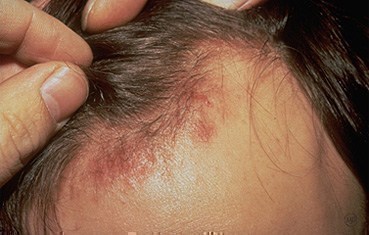Seborrheic Dermatitis Causes, Symptoms, Diagnosis and Treatment

What is Seborrheic Dermatitis?
Seborrheic dermatitis, also known as seborrhea, sebopsoriasis, seborrheic eczema, and dandruff and pityriasis capitis is a chronic, relapsing and usually mild dermatitis.
In infants seborrheic dermatitis is called cradle cap.
It is an inflammatory skin disorder affecting the scalp, face, and torso. It particularly affects the sebaceous-gland-rich areas of skin.
Seborrheic dermatitis doesn’t affect one’s overall health, but it can be uncomfortable and cause embarrassment. It isn’t contagious, and it’s not a sign of poor personal hygiene.
Causes of Seborrheic Dermatitis:
The exact cause of seborrheic dermatitis is yet unknown.
However, it is thought to result from a combination of the following factors:
- Stress
- Genes
- A yeast that normally lives on skin
- Certain medical conditions and medicines
- Cold, dry weather
A number of factors increase the risk of developing seborrheic dermatitis, including:
- Neurological and psychiatric conditions, such as:
- Parkinson’s disease
- depression
- A weakened immune system, such as seen in:
- organ transplant recipients
- people with HIV/AIDS
- alcoholic pancreatitis
- Congestive heart failure
- Endocrine disease that leads to obesity, such as:
- Some medications
- Scratching or otherwise damaging the skin on your face
- Having the following medical conditions:
- Acne
- Eating disorders
- Epilepsy
- Psoriasis
- Rosacea
Symptoms of Seborrheic Dermatitis:
The following signs and symptoms are exhibited by Seborrheic Dermatitis:
- Skin flakes (dandruff) on the scalp, hair, eyebrows, beard or mustache
- Patches of greasy skin covered with flaky white or yellow scales or crust on the scalp, ears, face, chest, armpits, scrotum or other parts of the body
- Red skin
- Redness or crusting of the eyelids (blepharitis)
- Possibly itching or stinging
The following regions are susceptible to Seborrheic Dermatitis:
- On the face, especially around the nose, on the eyelids, or behind the ears.
- In the middle part of the chest
- Around the navel
- On buttocks
- In skin folds under arms and on legs
- In the groin
- Below breasts
Diagnosis of Seborrheic Dermatitis:
The doctor may scrape off skin cells for examination (biopsy) to rule out conditions with some symptoms similar to seborrheic dermatitis, including:
- This disorder also causes dandruff and red skin covered with flakes and scales
- This skin reaction causes itchy, inflamed skin in the folds of the elbows, on the backs of the knees or on the front of the neck
- This condition usually occurs on the face and has very little scaliness.
Treatment of Seborrheic Dermatitis:
Medicated shampoos, creams and lotions are the main treatments for seborrheic dermatitis.
The following treatments are available:
- Creams, shampoos or ointments that control inflammation.
- Prescription-strength hydrocortisone
- fluocinolone
- desonide (Desowen, Desonide)
- Antifungal shampoo alternated with a stronger medication.
- Ketoconazole shampoo
- Antifungal medication taken as a pill. .
- Medications that affect the immune system
- Cream or gel that fights bacteria.
- metronidazole (Metrolotion, Metrogel)
- Light therapy with medication.
Related Articles:
Candidiasis Causes, Symptoms, Diagnosis and Treatment
Jacquest Erythema Causes, Symptoms, Diagnosis and Treatment
Herpes Zoster Causes, Symptoms, Diagnosis and Treatment
Yaws Causes, Symptoms, Diagnosis and Treatment
Molluscum Contagiosum Causes, Symptoms, Diagnosis and Treatment
Monkey Pox Causes, Symptoms, Diagnosis and Treatment
Myiasis Causes, Symptoms, Diagnosis and Treatment
Osteomyelitis Causes, Symptoms, Diagnosis and Treatment
Radiation Sickness Causes, Symptoms, Diagnosis and Treatment
Typhus Causes, Symptoms, Diagnosis and Treatment
By : Natural Health News




